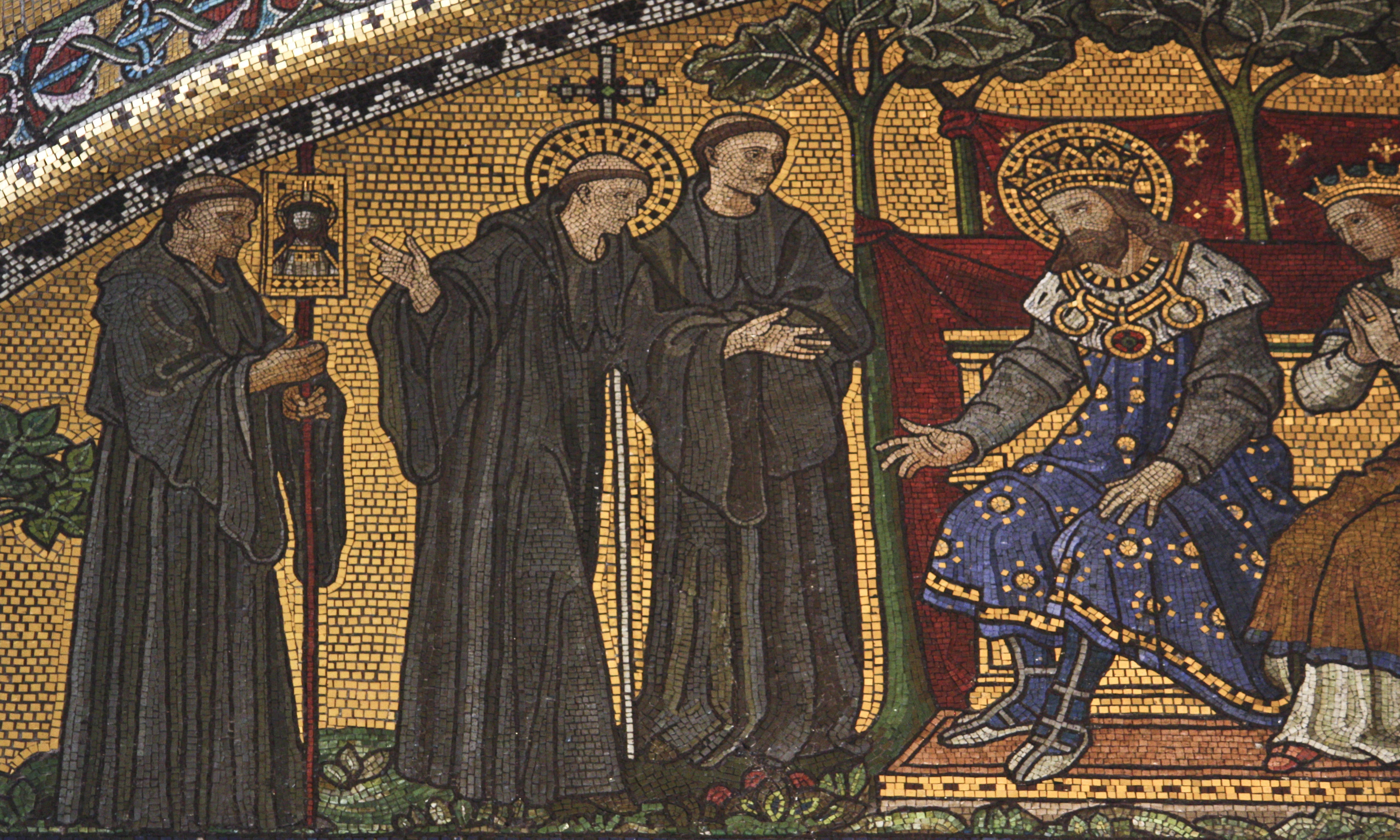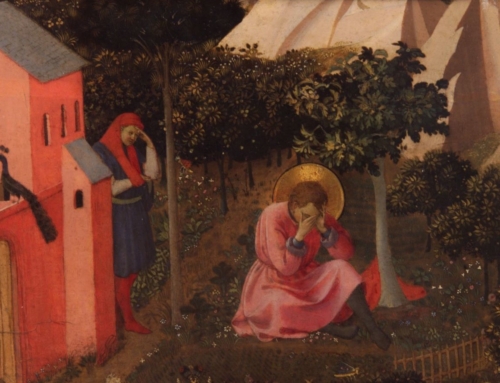Most Catholics have heard of St. Augustine: bishop, Father and Doctor of the Church, philosopher, author of the magnificent Confessions and countless other writings. Few, however, have heard of the other St. Augustine, Apostle of the English and Archbishop of Canterbury, whom the Church celebrates today. In 596 AD, he was sent by Pope Gregory the Great to bring the Gospel to the people of England. The island had been Christianized earlier, when it was under Roman control, but much of it had subsequently been overrun by the pagan Angles, Saxons, and Jutes.
Augustine, as is typical of missionaries, exemplified the virtue of fortitude. Fortitude has two chief characteristics. First and most fundamentally, fortitude consists in enduring obstacles and dangers in the pursuit of some great good. The classic example of fortitude among the pre-Christian philosophers was courage on the battlefield. To withstand the fear of death in fighting for the common good was to endure the greatest threat man can face and to do so in the most noble way. With the rise of Christianity, martyrdom became the epitome of fortitude. Martyrdom involves disregarding the fear of death, even in the face of injustice, for the sake of God and truth.
Augustine had been a monk in Rome when Gregory called upon him to lead an evangelizing mission of monks to England. Early on in the journey someone related the fierceness of the foreign tribes and the strangeness of their customs to Augustine’s small band. In great fear, the other monks induced Augustine to return to Pope Gregory and beg him to relieve them of their mission. Gregory, however, was zealous for the conversion of the English. He sent Augustine back to the group bearing a gentle but firm exhortation to persevere in the work and endowed him with the authority of abbot over them. Augustine, enduring whatever fears and grumbling may have still been coming from his monks as well as the dangers of a long journey, led them to the shores of the Kingdom of Kent in the southeast corner of England. The king there, Ethelbert, was married to Bertha, a Frankish Christian, and they hoped the king would be amenable to their preaching.
The second chief aspect of fortitude is well-ordered attacking. The brave man, whenever he is able to reasonably do so, will attack whatever obstacles or evils stand between him and the good. St. Augustine was faced with the superstition of the pagan people he encountered and the hostility of their priests. He attacked it by his preaching and example. When King Ethelbert first received the missionaries, he did so in an open field for fear that if they were in a house the monks would be able to cast a spell on him. After praying to God, Augustine calmly approached and, as the Venerable Bede relates, “preached the word of life to the king and his court.” The king was not immediately converted, but gave the monks a house in his capital of Canterbury and permission to preach throughout his kingdom. Bede says that Augustine and his companions lived as the primitive church did, sharing all things in common to the great edification of the people around them. Through much prayer, work, and sacrifice, they gradually won many English from their paganism to Christ, even King Ethelbert. St. Augustine died about 607 AD, but the church he had founded perdured and spread until the whole island was once again Christian.
Like St. Augustine of Canterbury, we’re faced today with the demise of a once Christian society. If you’re tempted on occasion to despair in the face of the obstacles posed by secularism, just call on St. Augustine for the grace to have the fortitude of a missionary in preaching the “word of life.”
✠
Image: Fr. Lawrence Lew, O.P., The Conversion of St Ethelbert







